On October 18, I was ringside to shoot the European Boxing Union‘s female super-lightweight European title fight. The crown vas vacant and the two contenders were both Italians. Silvia Bortot, a former two-time European champion, and Sonia Fracassi, the Italian champion. The match was pretty intense. All along the 10 rounds of the bout, Fracassi put her opponent under a great deal of pressure, and she responded with equal energy.
Ultimately, Bortot emerged victorious. However, the close referee scores (96-95, 96-95 and 97-93) show that the two fighters were closely matched, and that Fracassi could have won if she had thrown a few more punches, or if the match had been judged differently. However, as in life, only facts matter in sports, so the opinions of those without the power to judge are irrelevant.

As is customary in the world of boxing, the main event is preceded by a series of preliminary matches involving amateurs and other professional pugilists. In this way, amateur boxers belonging to the Amateur Boxing Federation can experience the thrill of a professional event.
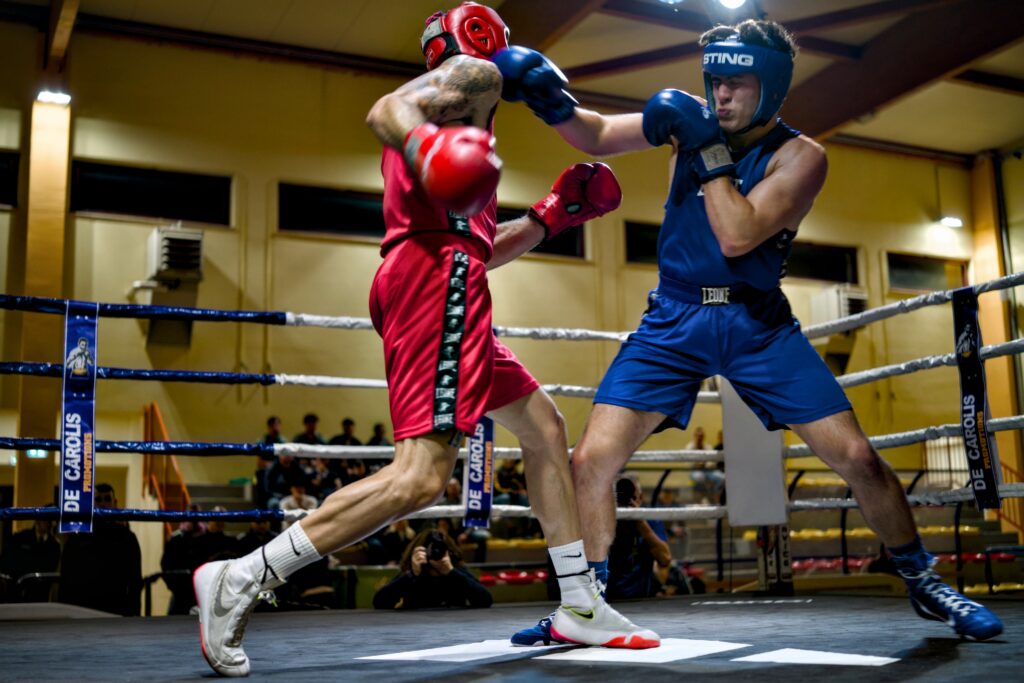 And professional fighters at the beginning of their career or looking for a way to be spotted by impotant promotions can showcase their talent.
And professional fighters at the beginning of their career or looking for a way to be spotted by impotant promotions can showcase their talent.
 As with wedding photography, there are standard shots in boxing matches, too.
As with wedding photography, there are standard shots in boxing matches, too.
In-between moments are as important as those capturing a blow or a KO, as they show anticipation

tactical assesment of the situation
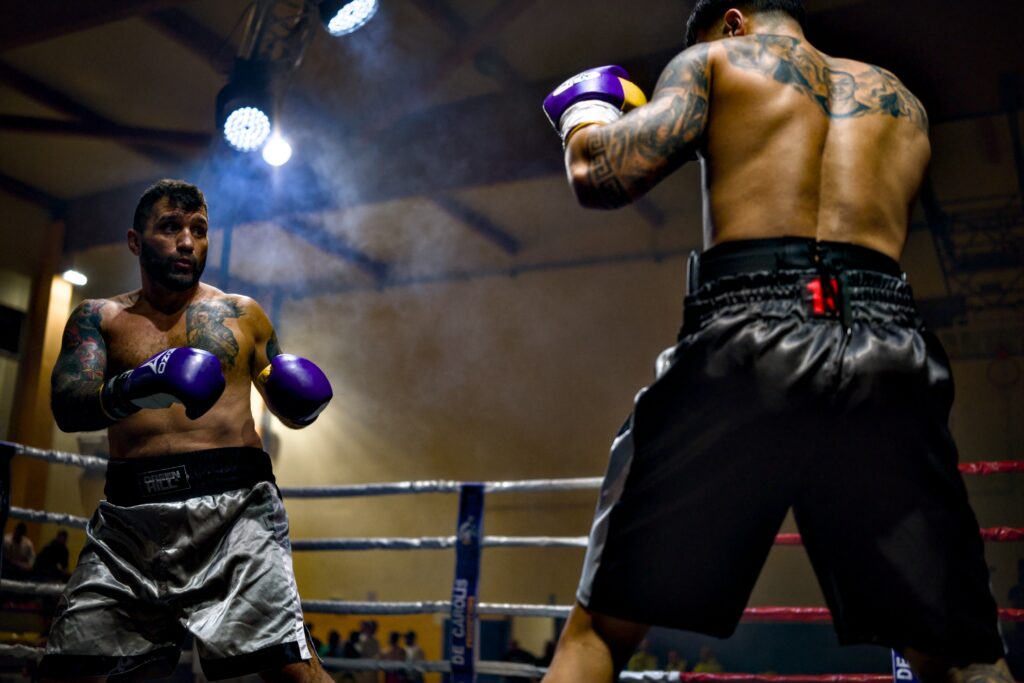
and fighters’ power play:
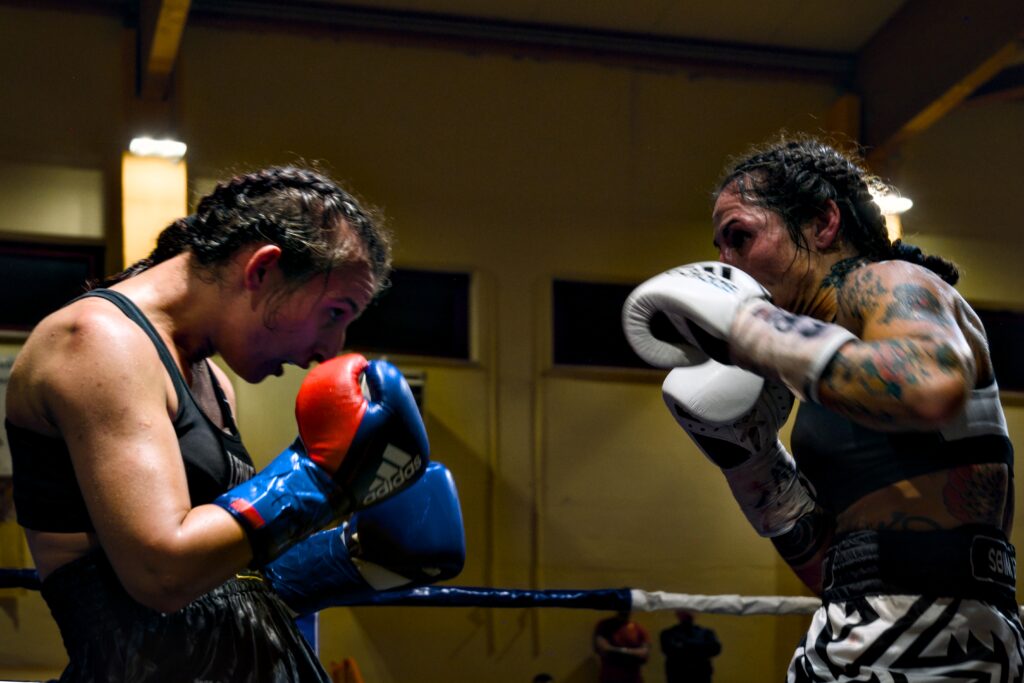
A chance that should not be missed is shooting what happens in the corner between rounds. Not only it allows to freeze moments of fear, pain, energy and confidence, but also gives the photographer precious hints to predict what is going to happen next.
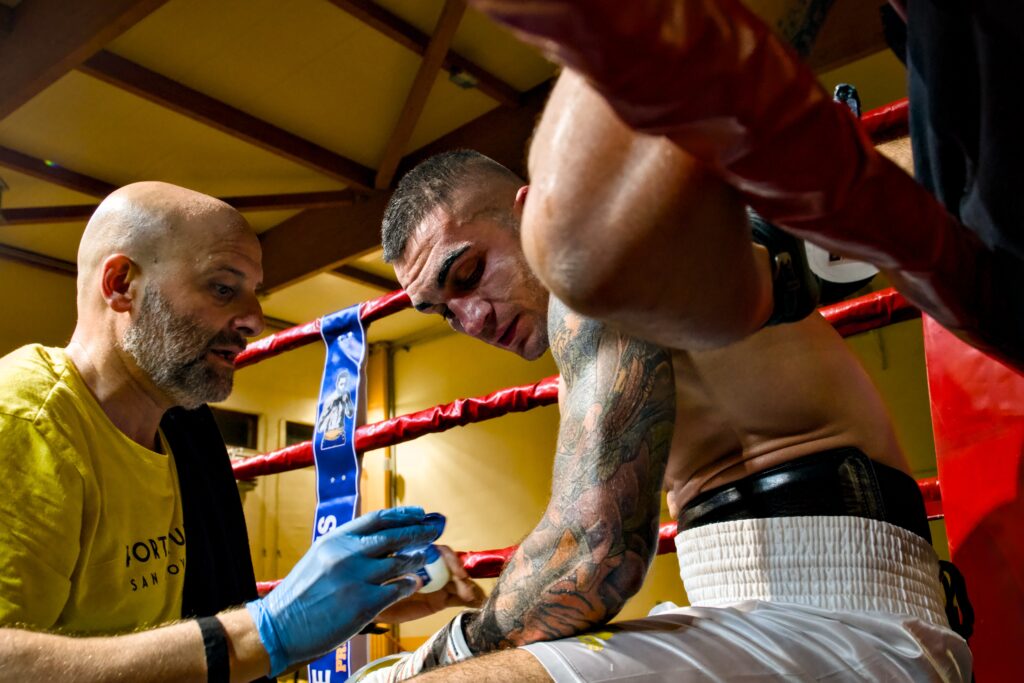
However, the most important shot of all is the KO. The best moment to capture is, of course, a split second after the killing shot has connected with the chin, jaw or liver — the vital points that almost guarantee taking down the opponent.
Admittedly, bursts are invaluable for improving the odds of capturing this moment. However, I stubbornly refuse to use this feature, relying on my reflexes instead. This means that sometimes I miss the crucial moment, but not all ships have sailed. What happens next may also be of photographic interest.
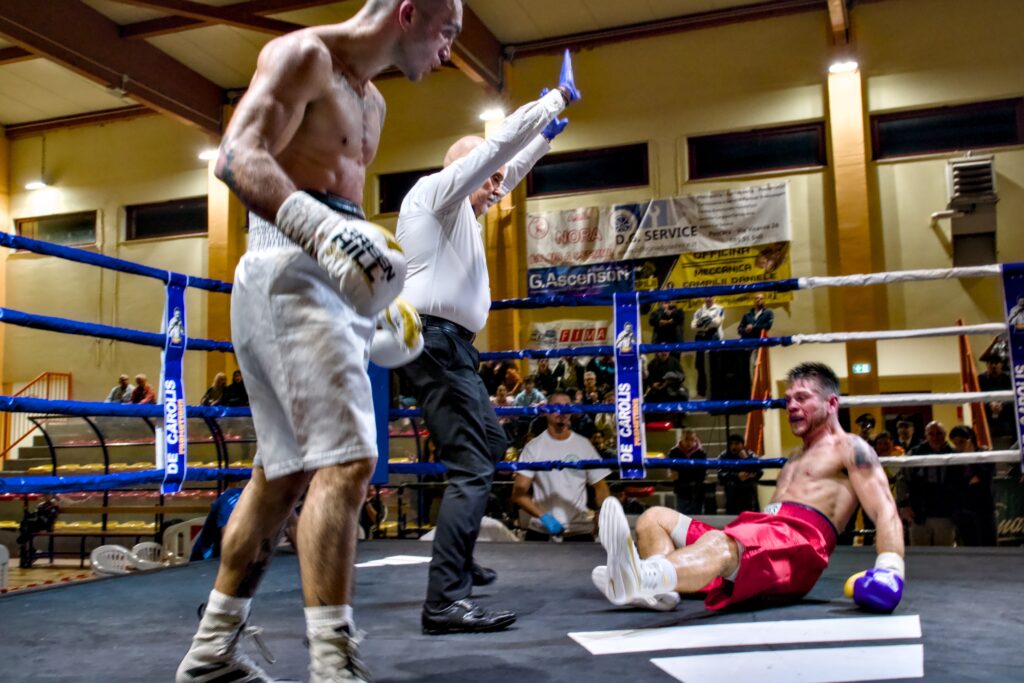 Another mandatory shot is the verdict’s announcement. The usual composition is a frontal shot, with the referee standing in the middle and holding the wrists of the athletes, raising the winner’s arm in the air. As much as these shots often all look alike, sometimes there are unpredictable events that turn an ordinary photograph into something very different.
Another mandatory shot is the verdict’s announcement. The usual composition is a frontal shot, with the referee standing in the middle and holding the wrists of the athletes, raising the winner’s arm in the air. As much as these shots often all look alike, sometimes there are unpredictable events that turn an ordinary photograph into something very different.

Sometimes autofocus’ errors may produce some interesting results. In this case the camera (well, actually the photographer) wrongly aimed at the ropes in the background instead of the athletes in the foreground. However, the result is not an outright failure, as —at least — it successfully conveys a sense of high-speed action.
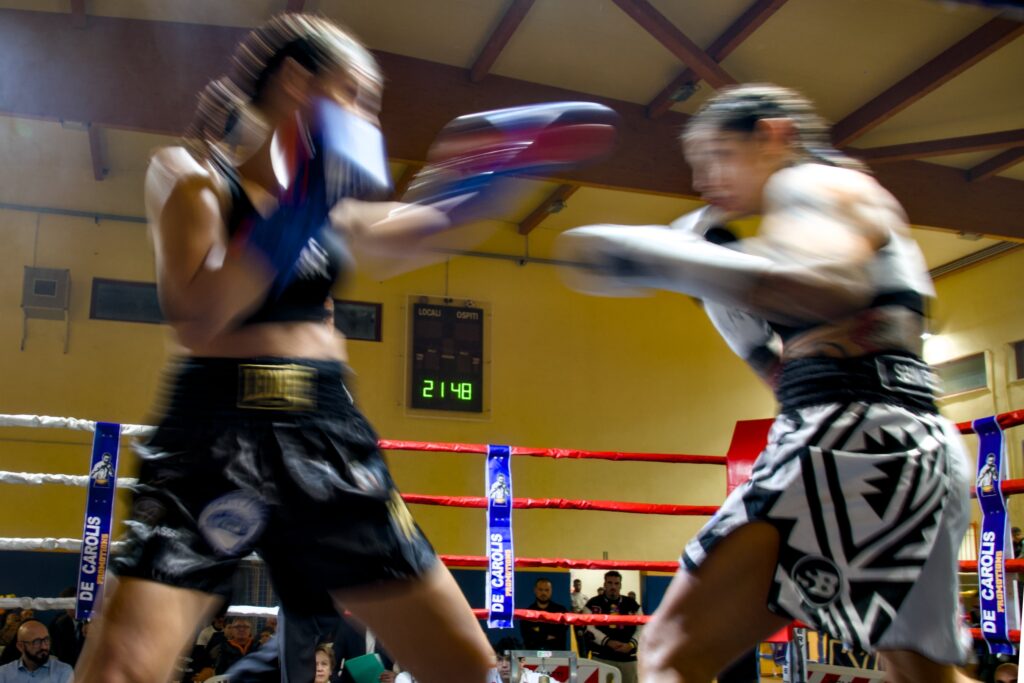
Instead of the Pentax kit, this time I used Fujifilm gear: an X-T4 and an X-T5 with a Fujinon XF 18-120/4 and the incredible Viltrox AF 27/1,2.
Since shutter noise is not an issue in these context I could use the mechanical one, which allowed to activate the cameras’ flicker reduction feature. This worked pretty well as there was no banding or other issues associated with LED lighting.
Share this post:

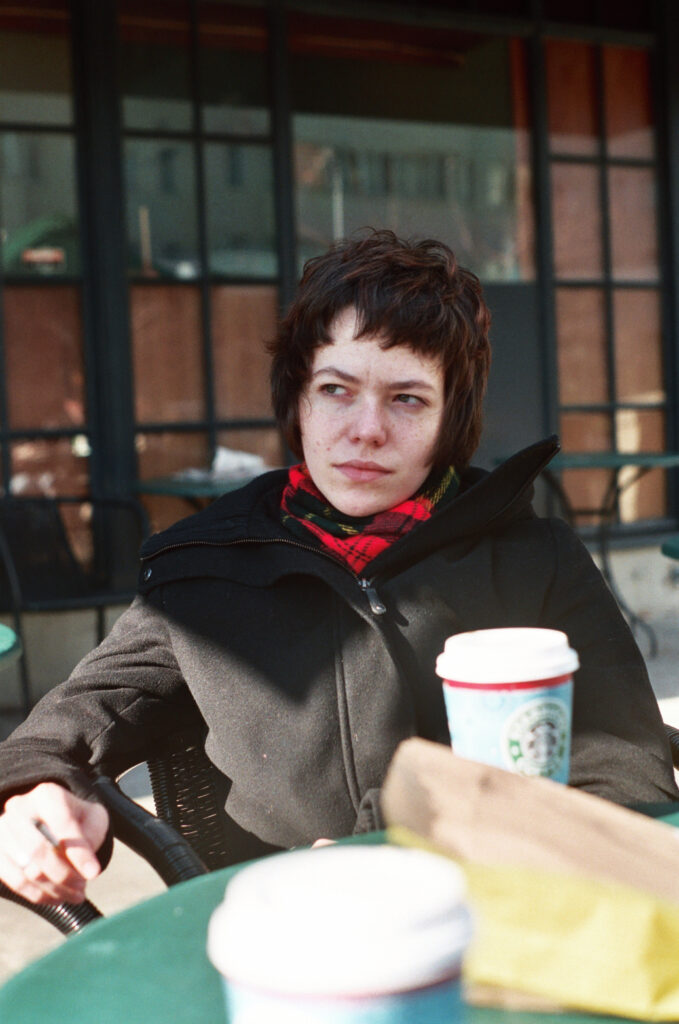
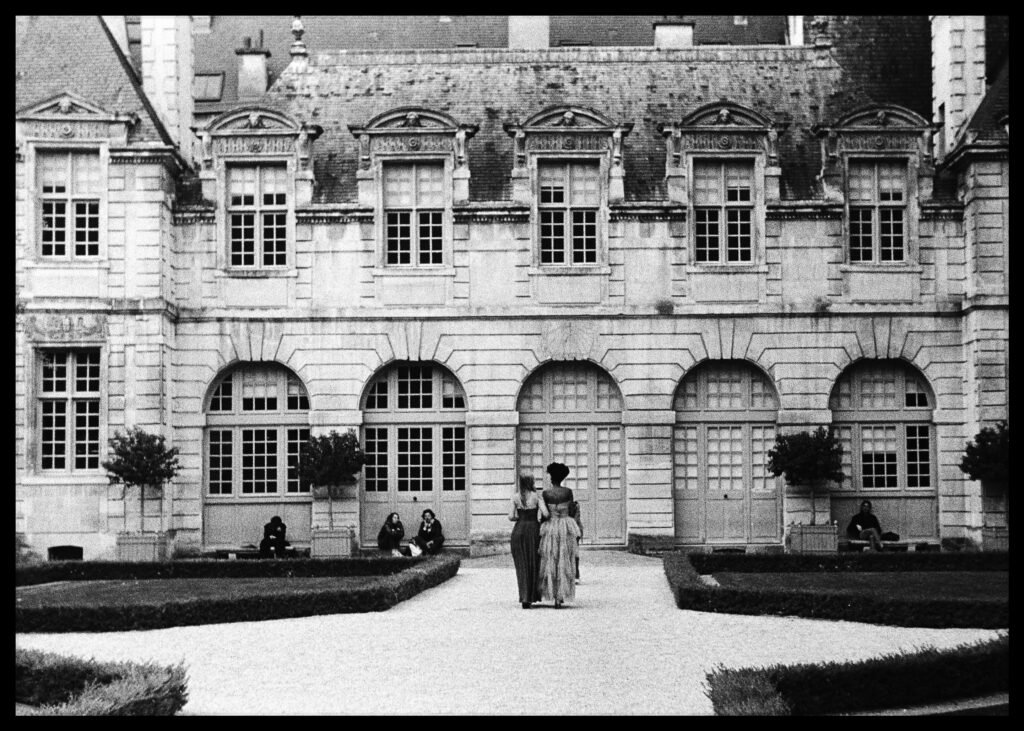


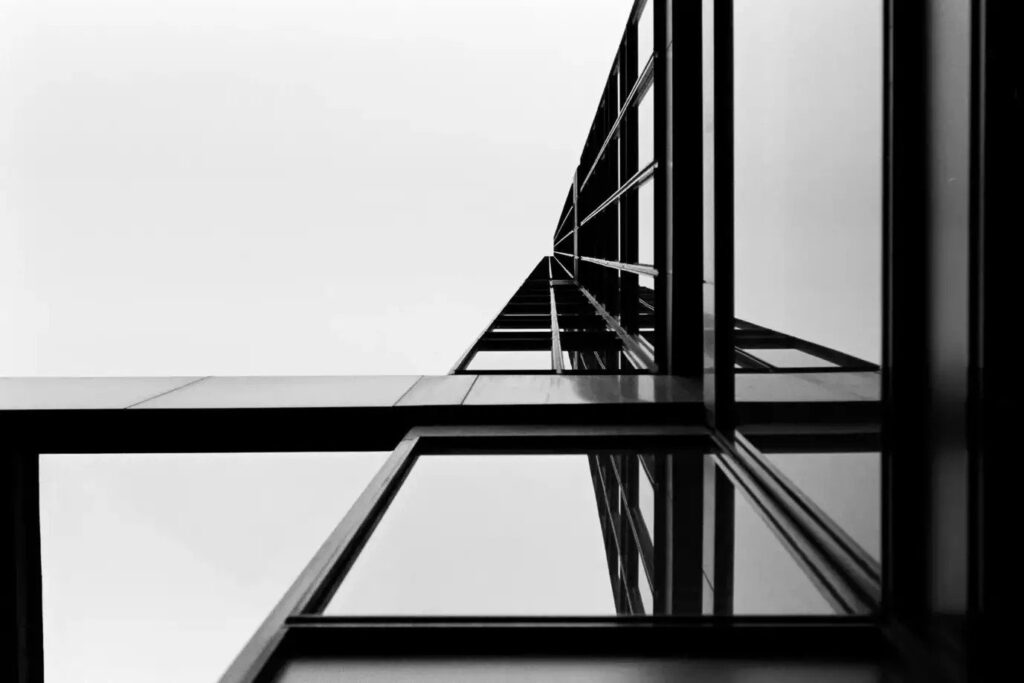


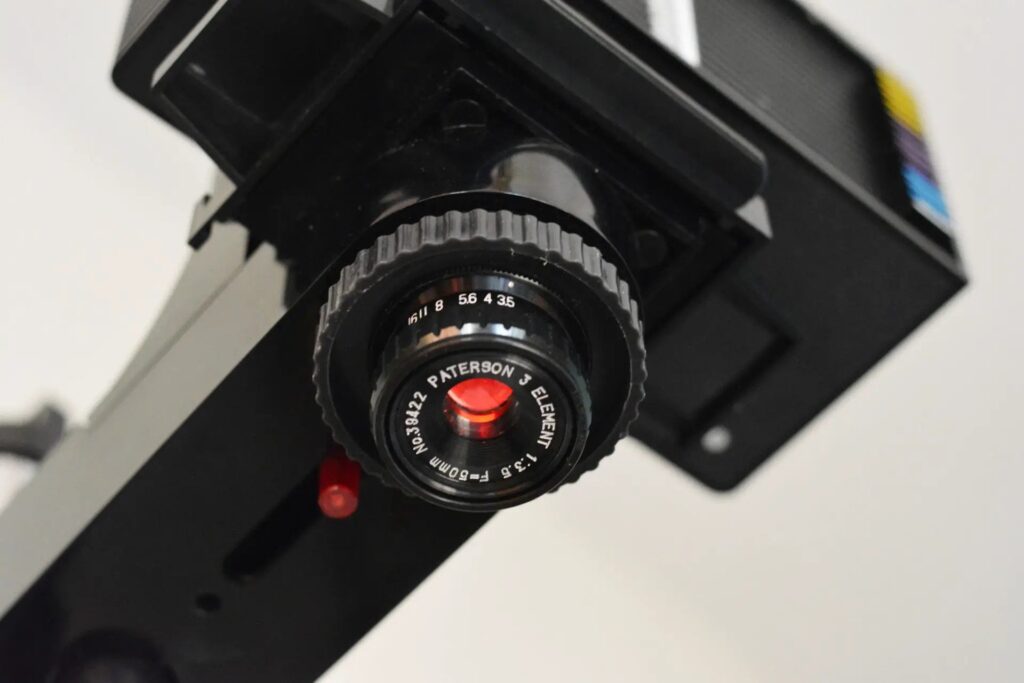
Comments
No comments found